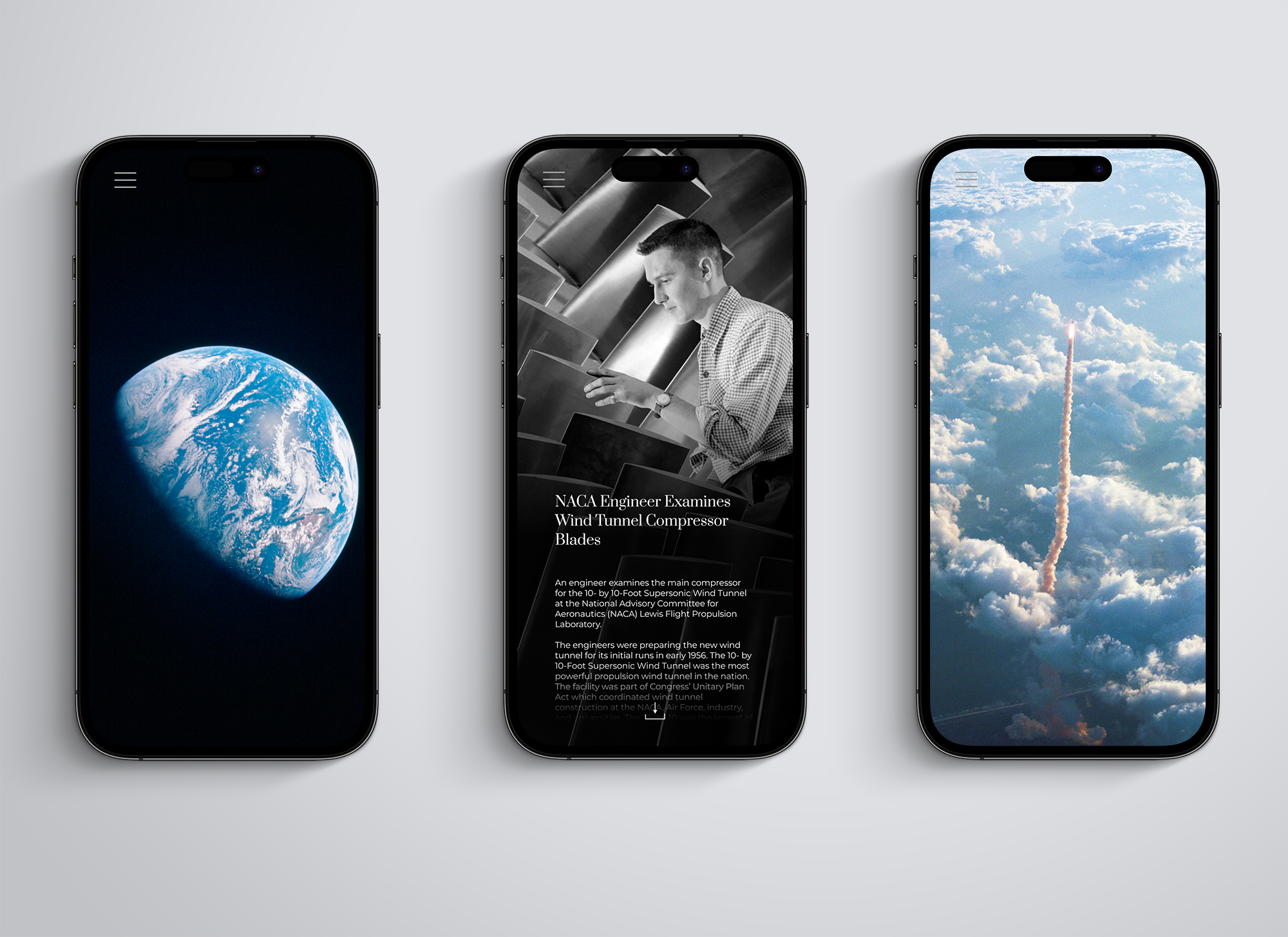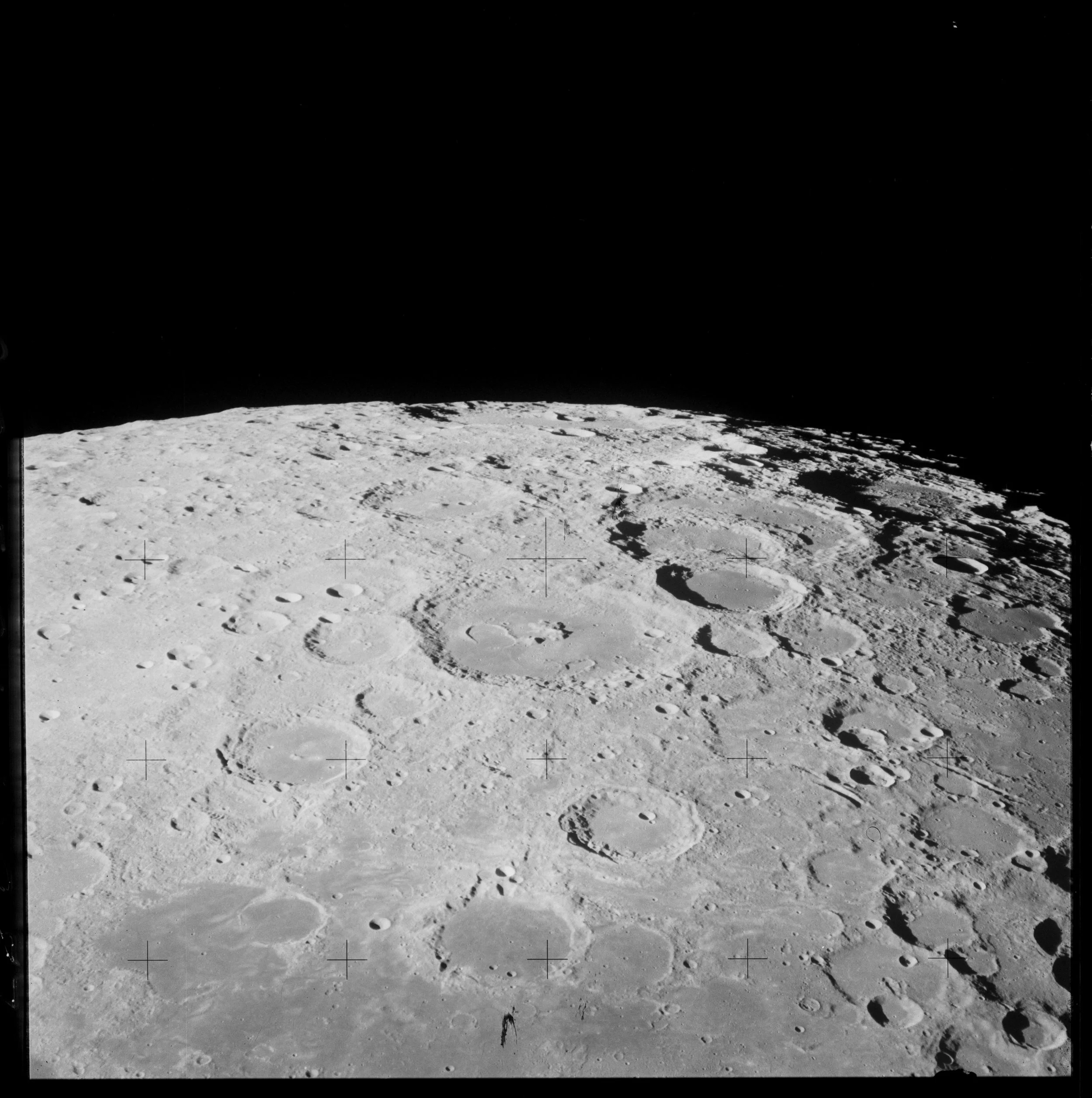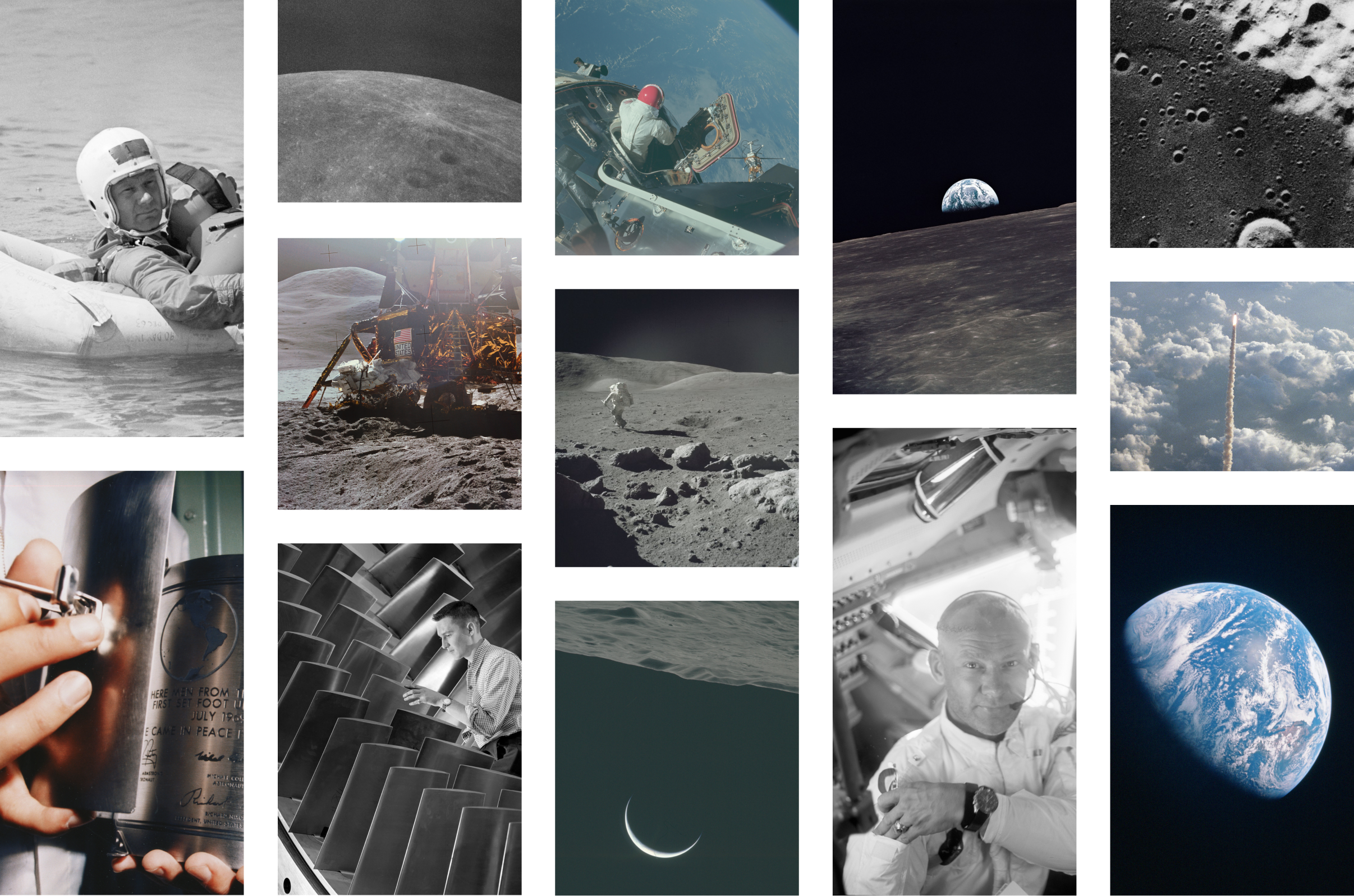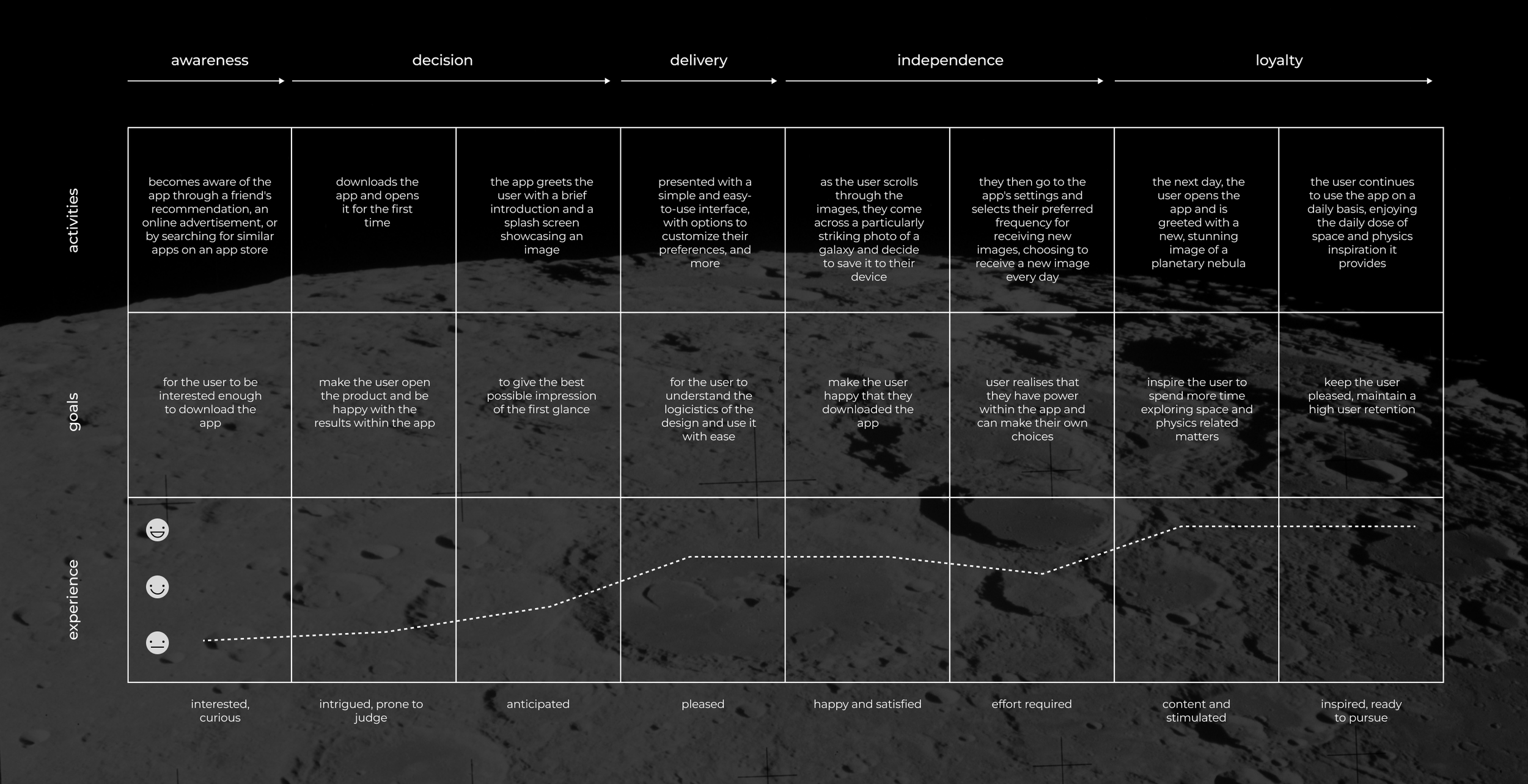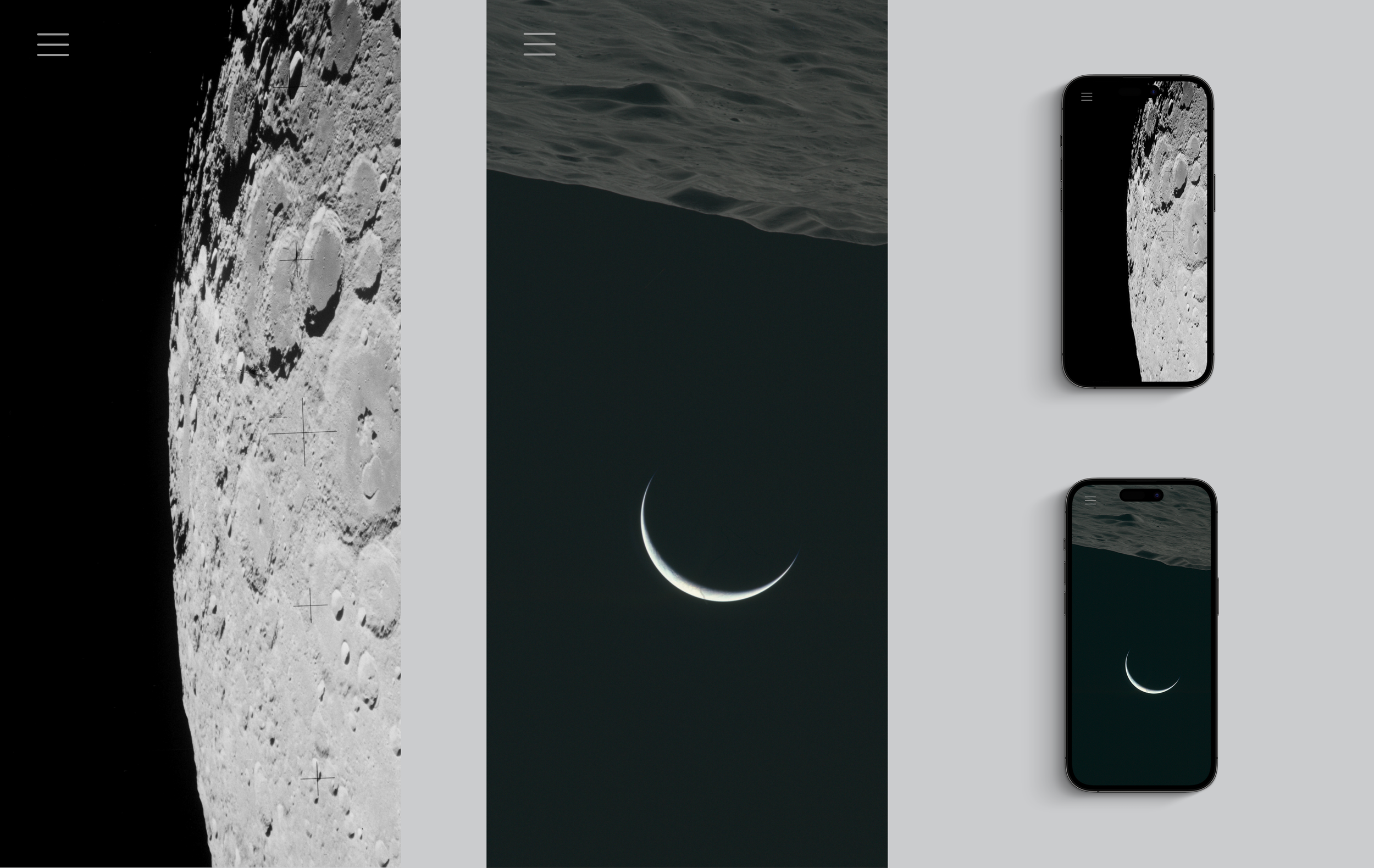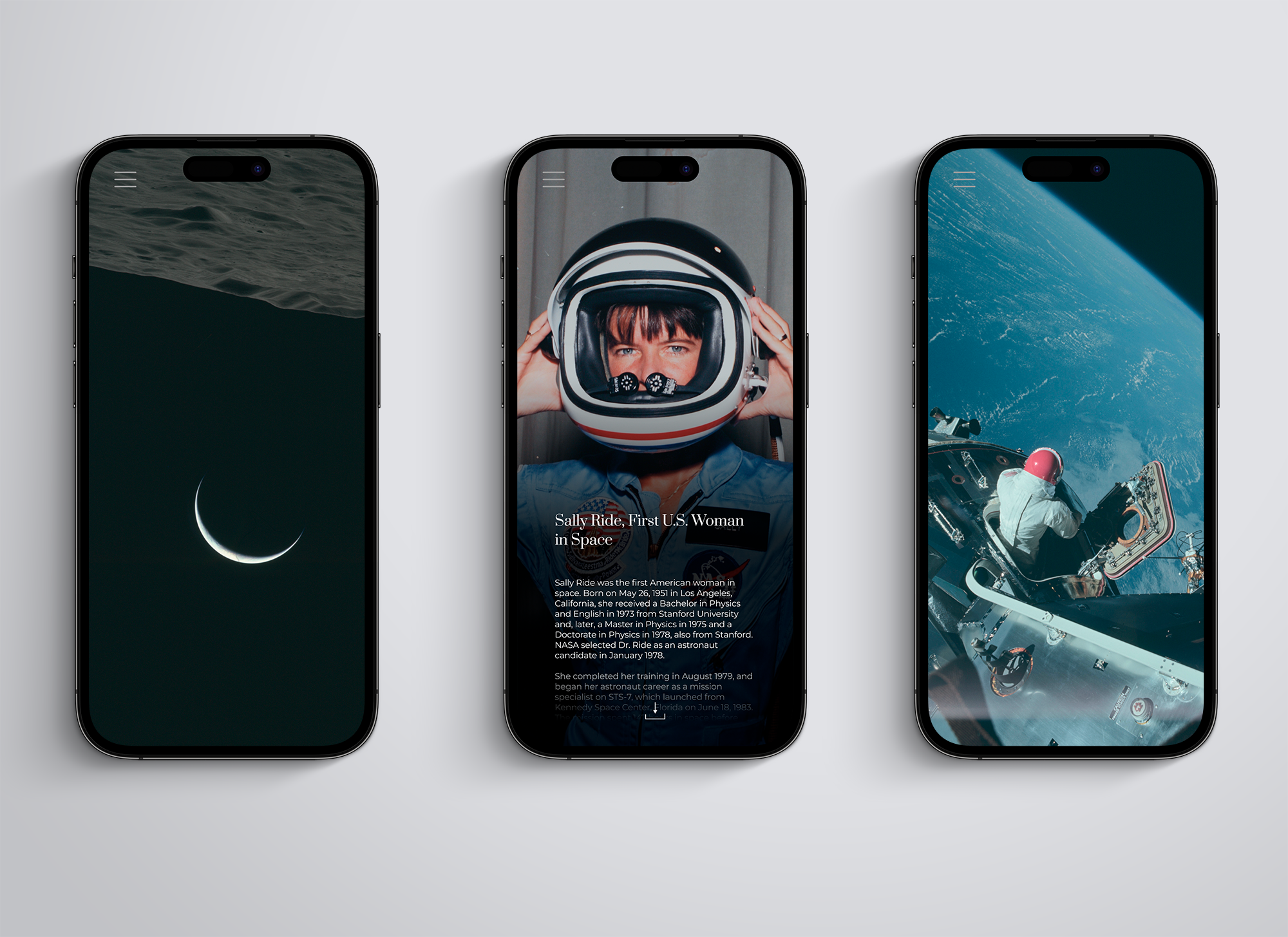Ether
“Ether” is a concept for an app combining archival stories from the physics and the space industry with stunning photos.
It consists of a straight forward, user-friendly interface, where anyone can easily receive beautiful photos from the vast collection of space images and find the perfect one to feel inspired by.
It’s a very simple idea, combining fun facts with high quality images, mainly unseen and rare archival photos. Each day, the app will send you a notification and provide you with a high quality-photo which you can save in a cloud-based album within the app. Each image comes with a description of what the photo contains and if you want to save it locally to use as a background or similar, you can simply go to your saved images in the app and download them to your phone. You can also set your own preferences for what frequency you’d like to receive photos at and browse the archives of already posted images.
Who is it for?
Ether was made for people who love to learn new things every day and also enjoys the aesthetic part of the learning. I believe an app like this would be important and has a place in the market for a few different reasons. For one, it allows people to easily access and view high-quality images of space, which can be both educational and inspiring. By providing a convenient way to learn about and appreciate the wonders of our universe, the app can help foster a greater interest in science and space exploration. Additionally, the app could serve as a valuable resource for people who are interested in using space-related images for artistic or creative purposes, such as in artwork or design projects. Overall, the app has the potential to inspire curiosity and wonder about the universe, and help people better understand and appreciate the world beyond our planet.
Img courtesy of NASA
Overall benefits
I think that a fascination with space and the physical world can have benefits on everyday life because it can help spark an interest in STEM fields, which can lead to exciting careers and advancements in these areas. This, in turn, can have a positive impact on society by driving innovation and progress in a variety of fields. Additionally, a greater understanding of space and physics can provide people with a deeper appreciation for the world around them, and help them better understand their place in the universe. This can inspire people to think more deeply about their own lives and the world they live in, and may even lead to a greater sense of awe and wonder. In this way, inspiration regarding space and physics can have a positive impact on both individual and societal well-being.
Img courtesy of NASA
Customer journey map
This is a customer journey map of a potential user who would become aware of the app, download it and use it. This type of map helps businesses understand the customer's experience and can identify any potential pain points or areas for improvement, and I value their use both for concept cases like this one and for other businesses as well.
Prototyping
After gathering my thoughts and images I wanted to use for an initial mockup, I went on to prototyping and to see them in a more realistic way.
Seeing a prototype and mockup of an app is important for me as a designer for a few reasons. First, it helps me get a better understanding of how the app will look and function, and whether it will meet the needs and expectations. This can be especially important if the app is intended to be used for educational or research purposes, which could potentially be interested for further development of the app.
Second, a prototype and mockup can help identify any potential problems or issues with the app's design, allowing them to be addressed and resolved before the app is developed. This can save time and resources, and help ensure that the final app is as effective and user-friendly as possible.
Third, a prototype and mockup can be a useful tool for communicating the app's concept and design to potential users, investors, or other stakeholders. This can help generate interest and support for the app, and can also be used to gather feedback and suggestions that can be incorporated into the final design.
Finalising the product and thoughts for the future
The app as it is now is very basic, which I quite like. It is one of the most interesting aspects of it for me, the idea that the only purpose of the app is to provide you with images and descriptions. Although I don’t have faith that this type of app would last very long in users devices since it’s not very multifaceted. But there are a lot of different functionalities that an app like this could potentially have that could enhance the life-span of Ether.
For example:
Interactive elements, such as quizzes or games that test users' knowledge of space and physics, or challenges that encourage users to explore and learn more about the images and their significance.
Allowing users to search for specific images using keywords or other criteria.
Providing alerts and notifications for upcoming space and physics events, such as eclipses, meteor showers, or rocket launches.
Allowing users to submit their own images for inclusion in the app, subject to moderation and approval by the app's developers or moderators.
Overall, the functionalities of Ether could vary widely, depending on the specific goals and target audience. However, the common thread among these functionalities would be to provide access to high-quality, engaging, and educational content related to the fascinating world of space and physics.
All img courtesy of NASA and CERN
